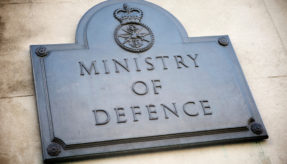
The Ministry of Defence’s estate management strategy has been criticised as “risky” and “uncertain” by the National Audit Office (NAO).
The strategy ‘A Better Defence Estate’ published by the MOD this week sets out its vision that will enable ‘Infrastructure that is affordable and optimised to enable Defence capabilities, outputs and communities both now and in the future’.
The NAO in its ‘Delivering the Defence Estate’ report said that the MOD had for many years failed to have a clear plan of its future size and structure of its estate.
Uncertainty about where to invest its limited funding and overall underinvestment meant that large parts of the estate were “poor and deteriorating”.
The decline in the condition of the estate means that the MOD now faced substantial expenditure over the next 30 years to bring the estate back up to scratch.
The government has given targets for the Department to reduce its built estate by 30% by 2040. The MOD is also the largest contributor to the government’s objective of releasing land to build 160,000 new homes between 2015 and 2020.
The MOD has set out a new strategy for its future estate that supports military capability while meeting government targets. It has created a Footprint Strategy, which will contribute 15,000 toward the housing target by 2020 and allow it to offload 25% of its estate by 2040.
Although the implementation of the Footprint Strategy will result in reduced costs, the Department will still face estimated unfunded costs of at least £8.5Bn.
The NAO says that the MOD is yet to address how it will tackle these difficulties in sustaining the whole estate in the longer term.
It was noted that there had been some successes, most notably the management of the Army Basing programme and developing the Footprint Strategy.
The Department carried out a large-scale change of how the estate was managed in 2011. By creating the Defence Infrastructure Organisation (DIO) to centrally manage the estate, and prioritising the Commands’ estate needs, it was envisaged it would enhance its management and allow it to reduce costs.
In 2014, further changes were made by linking up with a strategic business partner, led by Capita, to run the DIO and help it achieve savings.
The strategic business partner’s performance, however, failed to meet expectations and has not made a significant impact in transforming the Defence Infrastructure Organisation to better meet the needs of the Commands. Between June 2014 and July 2016, the Department paid the strategic business partner £90M.
Amyas Morse, Head of the National Audit Office, said: “The Department has started to improve its management of the defence estate, however the strategy and current funding levels only allow for a partial reversal of the decline in the condition of the estate.
The Department has not yet set out how it will fully address the significant challenges it faces sustaining the whole of the estate and resultant risks to military capability.”
If you would like to join our community and read more articles like this then please click here
Defence Infrastructure Organisation DIO Ministry of Defence MOD NAO National Audit Office







